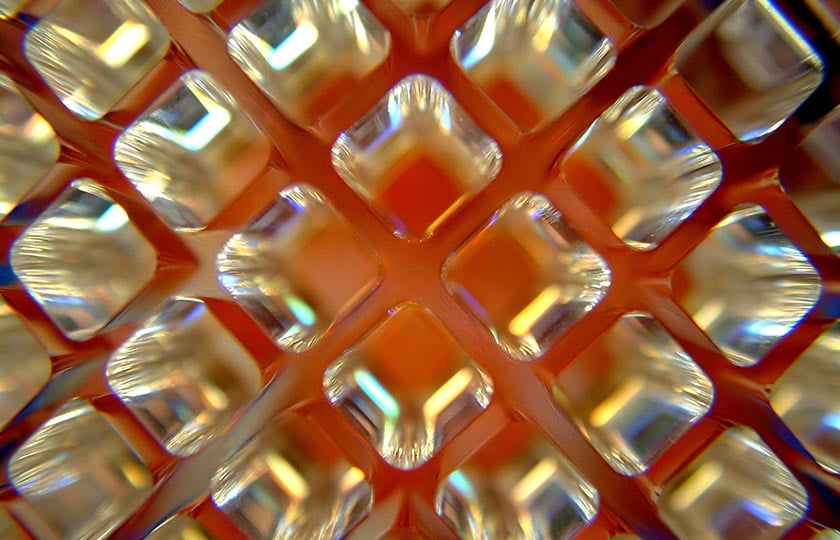Transforming Drug Development: HTS Meets 3D Cell Culture
Combining high-throughput screening (HTS) and 3D cell culture to reach unmet outcomes in drug development and personalized medicine.
- What is 3D cell culture?
- What is HTS?
- Why should one combine HTS with 3D cell culture?
What is 3D cell culture?
The need for predictive in vitro outcomes in drug development has fueled the progress of 3D cell culture tools. Not long ago, researchers were skeptical of the value of culturing cells in a 3D environment. Today, 3D cell culture is becoming a routine tool that plays a vital role in drug discovery, personalized medicine, and life sciences research. A range of commercially available platforms has emerged to address practical and biological challenges when culturing cells in 3D. 3D cell culture approaches are still relatively new despite their early impact, and there is still ambiguity in the robustness of culturing techniques and even the use of nomenclature depicting 3D morphology. [1,2]
What is HTS?
High-throughput screening (HTS) is an integral part of early-stage drug discovery and becoming a necessary tool for developing personalized medicine assays. [3, 4]
Generally, the immediate goal of HTS is to identify compound leads from a large pool of chemicals as one of the early steps of drug development. Tools part of HTS include liquid handling, robotics, specialized microscopes, plate readers, designed microwell plates, data storage computer servers, data analysis software, and AI algorithms.
HTS methods in pharma and biotech are routinely used to accelerate drug development and reduce assay costs. As a result, essential requirements for HTS are sample miniaturization and speed of data acquisition and analysis. Small sample size is required to maximize economic value and sampling rates to improve statistical confidence of results. Microplate formats with high well density, 96, 384 or 1536 wells, play a pivotal role in enabling HTS and various optical readout options, such as fluorescence and chemiluminescence. To meet HTS user needs, instrumentation and new biomarkers are rapidly evolving along with technologies that enable miniaturization, throughput, automation, and speed of cell-based assays, such as magnetic 3D cell culture (M3D).[5]
Why 3D and HTS?
The integration of 3D cell culture with HTS is needed to improve the predictivity, speed, and cost of drug development. Although various 3D tissue culture techniques are being developed, few can address miniaturization, readout compatibility, and assay efficiency demanded by HTS user needs.[3, 4] Overcoming these challenges will require coordination between the various stakeholders, pharma/biotech, CRO, researchers, instrument companies, microplate manufacturers, and data acquisition and analysis software developers.
Beyond miniaturization, automation, and assay readout demands, integration of 3D cell culture with HTS requires the following general steps:
- Compound library maintenance and sample preparation
- Workflow fitting for lab automation and robotics
- Highly reproducible and homogeneous 3D cell spheroids or organoids
- Biomarker readout
- Acquisition and storage of data
- Data analysis algorithms
References
[1] Souza GR and Spicer T. SLAS special issue editorial 2022: 3D cell culture approaches of microphysiologically relevant models. SLAS Discov. 2022 Mar. doi: https://doi.org/10.1016/j.slasd.2022.03.006
[2] Langhans SA. Three-Dimensional in Vitro Cell Culture Models in Drug Discovery and Drug Repositioning. Front Pharmacol. 2018 Jan 23;9:6. doi: 10.3389/fphar.2018.00006. PMID: 29410625; PMCID: PMC5787088.[3] Fernandez-Vega V, Hou S, Plenker D, Tiriac H, Baillargeon P, Shumate J, Scampavia L, Seldin J, Souza GR, Tuveson DA, Spicer TP. Lead identification using 3D models of pancreatic cancer. SLAS Discov. 2022 Apr;27(3):159-166. doi: 10.1016/j.slasd.2022.03.002. Epub 2022 Mar 17. PMID: 35306207.
[4] Hou S, Tiriac H, Sridharan BP, Scampavia L, Madoux F, Seldin J, Souza GR, Watson D, Tuveson D, Spicer TP. Advanced Development of Primary Pancreatic Organoid Tumor Models for High-Throughput Phenotypic Drug Screening. SLAS Discov. 2018 Jul;23(6):574-584. doi: 10.1177/2472555218766842. Epub 2018 Apr 19. PMID: 29673279; PMCID: PMC6013403.
[5] Souza, G., Molina, J., Raphael, R. et al. Three-dimensional tissue culture based on magnetic cell levitation. Nature Nanotech 5, 291–296 (2010). https://doi.org/10.1038/nnano.2010.23
